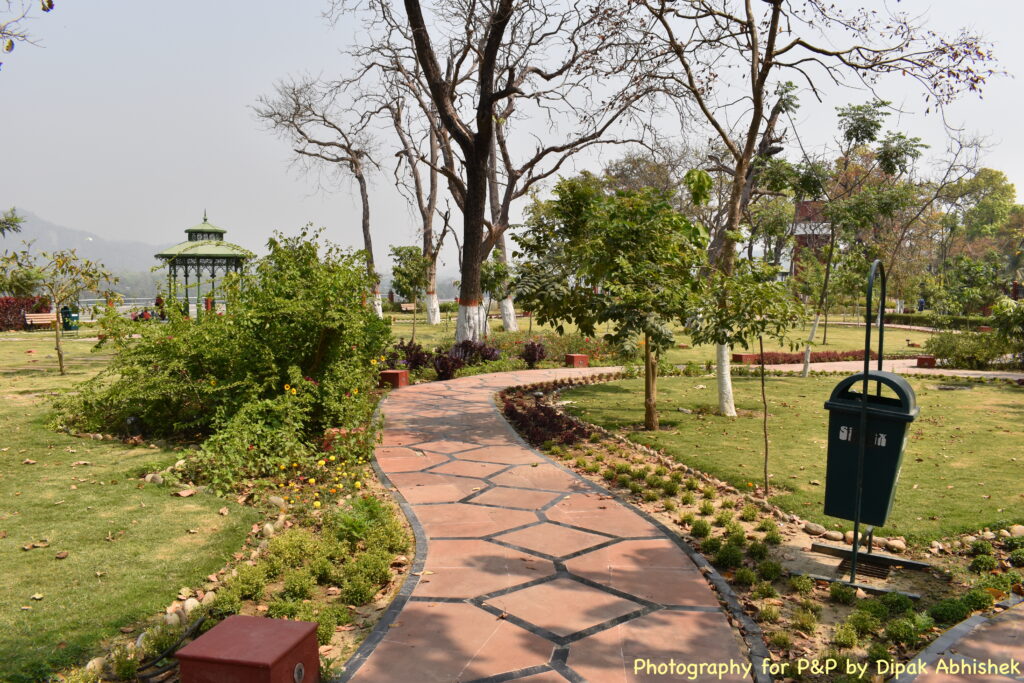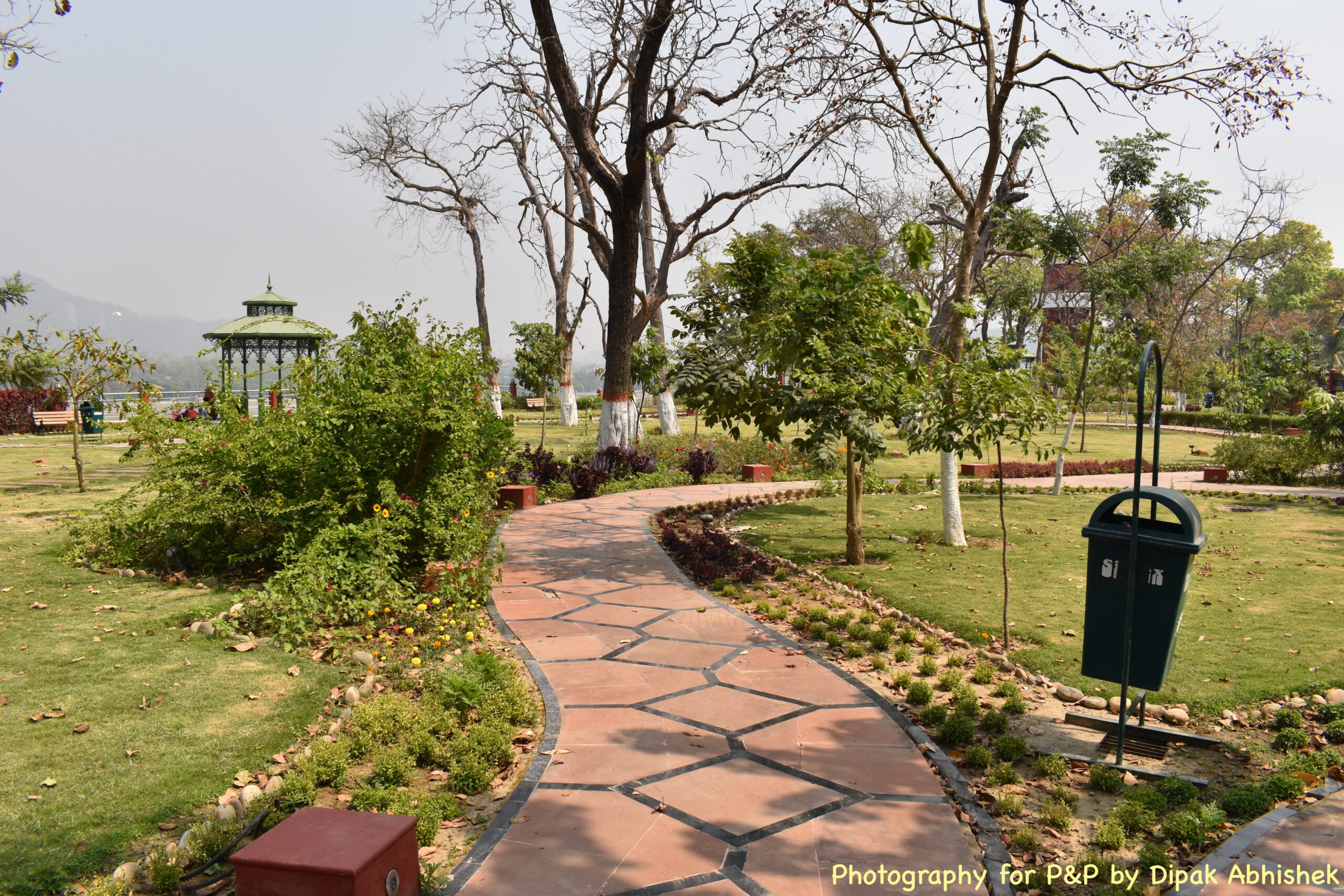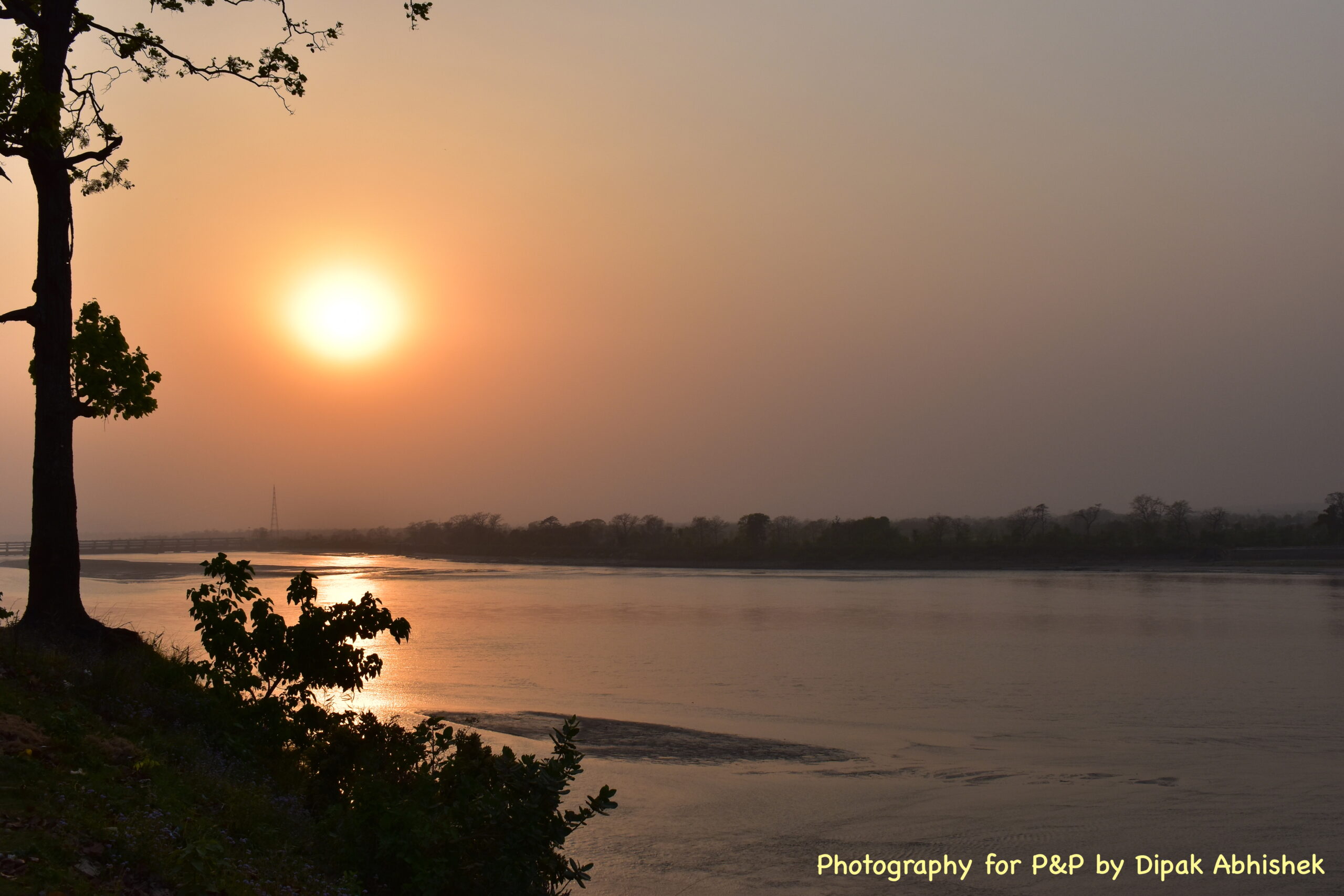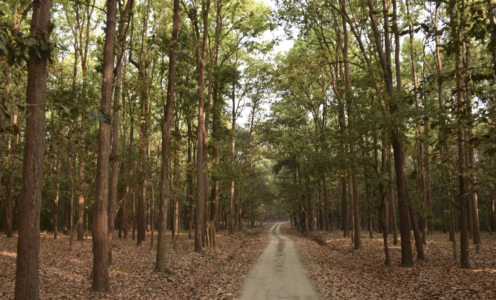It is not so much for its beauty that the forest makes a claim upon men’s hearts, as for that subtle something, that quality of air that emanation from old trees, that so wonderfully changes and renews a weary spirit.
Robert Louis Stevenson
The Valmiki Tiger Reserve
The land of India is not only known for the heavy population density of humans but also a rich density and diversity of non-human inhabitants – the flora and fauna. With only 2% of the global share in terms of land area, India has an outsized contribution to supporting biodiversity. 7.5% of the overall species of animals inhabit India. Also, in terms of plant diversity, India stands at the tenth position in the world and fourth in Asia. In order to preserve its ecological asset, there is a huge network of protected areas in India – National Parks, Wildlife Sanctuaries, Tiger Reserves and Elephant Reserves.
|
The Valmiki Tiger Reserve lies in the North-western-most district of Bihar – West Champaran. It is an 8 hours ride by road, starting from Patna. The mode that I selected was part of the package offered by Bihar Tourism – the Valmiki tourism safari – 2 days 1 Night. The traveller has the capacity of taking a maximum of 16 passengers at a time. Starting the traveller’s ride at around 8:30 am from the Kautilya Hotel of Patna, the traveller took us through the Gandhi Setu and JP Bridge and then through the busy city roads of Muzaffarpur and Vaishali to finally reach the West Champaran district at around 6:00 pm. As the entire region lies along the range of the lower Himalayas, the temperature here is always a few degrees lower than in the other districts of Bihar. So even if you are planning the trip in early or peak summers, it is advisable to carry some warm clothes. The temperature drops especially in the morning and at night. |
The Grand Welcome by Nature
The lush green lining of dense trees welcomes the visitors on both sides of the road as soon as one enters the Valmiki Nagar region. One can experience the conversation of nature through more than one sensory route – the eyes get the soothing sight of nature at its colourful best, the aroma of the wind diffused with the scent of leaves of the sal trees and Munj grasses makes its way through your nasal lining and the cool winds from the Shiwaliks whisper pleasantries in your ears with alacrity.
Cuddling with Canopies: The Walk
On getting this grand welcome from nature, all the journey fatigue seems to just fade away in moments. The heart’s call to witness nature surpassed the body’s demand for rest. And so, after a short snack break, we rushed outside for the much talked about ‘canopy walk’ to explore the vast valley. Just in front of the hotel, one is embraced by the view of the clean and wide Gandak river, also referred to as the Narayani river. The other side of the river is dotted with the temples of Nepal. A long stretch of the riverfront is created on both sides and the river acts as the national boundary between India and Nepal. Given that there are no restrictions on the movements between the two countries, one can visit the temples of Nepal as well.



Koleshwar Jhula
Just near the riverfront, one can also enjoy the walk across the Koleshwar Jhula – a type of bridge connecting two ends of the mountain in the middle of the forests. It is named so as it keeps swinging as you walk across it and enjoy the nature around. If you are fortunate enough you may spot beautiful peacocks and deers. It is literally hung between two mountain peaks without any bridge support. And, in the middle of it, there is a selfie spot too !!


All the rooms and resorts are in one particular area within the reserve itself and all are under the Bihar government. Thus, the charges of the resorts are quite reasonable given the services included. There’s also a canteen within the compound where one can enjoy the food at a fixed and reasonable price. We stayed at the Valmiki Vihar Resort.
There are different types of rooms available for stay. From the beautiful tree houses to bamboo houses and normal brick and mortar rooms. Booking can be done either separately or through the packages offered by Bihar tourism.


The Cultural Farewell to Day One
As the darkness of the night intensifies, all the tourists come back to their rooms and await the beautiful cultural dance and songs organised by the hotels and performed by the local men and women. At around 8:00 pm, the cultural program begins.



This followed with a brief documentary of the safari (that we were soon to experience the very next morning). The physically tiring but psychologically enriching day ended with a simple yet delicious supper. We went to sleep with clear instructions from Sonu (our guide) to wake up early as the Gypsy will be ready for the Jungle safari by 6:00 am sharp.
“With the imprints of Gandak and the scent of leaves, the ‘conscious’ slipped into the slumber’s hold..
..the ‘subconscious’, kept contemplating the excitement that ‘tomorrow’ would unfold..”
Day 2: The Safari - The Greens The Browns
So true to his words, the whole team, along with the Gypsy (the preferred vehicle for visiting wildlife Safaris in India) was ready by 5:45 am. Tea and biscuits were ready by 5:30 am. But being a morning lover, I was awake and ready by 4:30 am and thought of taking a stroll, enjoying the first light of dawn as it strikes and gradually spreads colours across the Gandak (though it is not really advisable to do, after all, you are still inside a forest!). But thankfully, I did not have to go very far actually. Just in front of the resort, there’s an enticing eco-park. The park normally opens at 9 am and entry is allowed only if you have a ticket. But, the guard was kind enough to let me in for free. And there I was. In the beautiful park sitting right next to the Narayani river.

The park was a real charm. An island of ‘organised’ beauty in the ocean of pristine and raw nature! It is very well maintained and is a great centre of attraction for children.
Time flies at rocket speed especially when you want it just to stay. Very soon it was 5:45 am and I could hear a whistle calling all the tourists to assemble at the resort’s compound.
The Gypsys that take the tourists inside the core forest area are of varying capacities – from 6-seater to 12 seaters. The most recommended timing for the safari is early in the morning as it is difficult to spot animals in mid-day.



With every new turn or movement of leaves, we expected that a tiger would appear soon. This hypothetical hide and seek continued for another 30 minutes and we finally accepted that no tiger is going to be spotted today.
The disappointment of not spotting a tiger soon subsided by the sight of two majestic gaj (elephants) whom we met in the compound of a temple in the middle of the jungle. Yes! Not just the temple, many tribal communities are entirely settled within the jungle (their traditional dwelling areas). With the bonus blessings of gaj and gaai (elephants and cows), we finally headed towards our way out of the jungle.


Golghar

The next and final destination was Golghar. As the name suggests, the two-storied building is almost elongated and oval in shape. The main attraction was the telescope on the top floor of the building that lets you clearly glance at Nepal which lies on the other side of the river. Amidst the sensation of the agile Indian breeze, the eyes were cherishing the Nepali calmness!
The Eco Park
Remember the first thing we talked about – the early morning solitary park visit? Well, now it was time to give a formal and ‘official’ visit to this charming place.



And with the visit to the park, it was finally time for lunch and to bid adieu to the beautiful place. We had come here with one bag of clothes and other essentials but were taking back tonness of mesmerising moments and some really cool clicks !!
Where are the Tigers?
It is only ironic that even in the Tiger Reserves, the spotting of tigers is so difficult. Tigers, the pride of the jungles are much less visible. The vast size of the jungles, the preference of the tigers for the core part of the forest areas, which is generally not accessible to tourists, the migration of the tigers to the adjoining reserves (in the case of the Valmiki Tiger Reserve, the tigers often migrate to the adjoining Chitwan National Park in Nepal) and the general shy nature of the giant mammal are some factors for their lesser appearance. This can also be attributed to human-animal conflict and its repercussions on the hapless animals, which makes them avoid crowded places. In addition, the incidences of poaching and trafficking cannot be completely ruled out either.
However, it would be still incorrect to conclude that tigers are dwindling in number. In fact, as per the report by WWF, tigers have actually grown in VTR from 2012 to the present. With the presence of multiple breeding females, VTR has emerged as a potential source population in the landscape. Habitat contiguity with Chitwan NP and Parsa NP, VTR ensures unobstructed gene flow between the tiger populations of the two neighbouring countries. The same report also recommends rigorous assessment of prey species in the future to ascertain the role of such management practices in the observed growth of wild prey in VTR. (Click here for the report)
Yes, we could not spot those splendid stripes of a Tiger in the wild, which we more specifically wanted to do. That, for us, was a miss! But, what we witnessed was still resplendent and felt like a whole new experience. We were in the cradle of nature, surrounded by numerous flora and fauna. The jungle safari, in particular, was the most refreshing part of our tryst with nature.
We often carry with us the regret of having missed something. And in that, we often miss appreciating what was not missed! The trees – the fauna – make forests ‘the forests’. As we passed through those curvy narrow pathways of the forest, the wildlife was difficult to locate and required long drives for that one single glimpse. But those trees, some of them being even more than a hundred years old, were always there with the branches wide open and welcoming. The refreshing greens and the scenic canopy never demanded long bumpy search rides. While the wild is crucial for the ecosystem of forest, these woods made the very existence of forest possible. They are always there to content the curious visitors with the wavy dance of leaves.
It was a weekend well spent, beyond any words and means,
Among the warmth of the loved ones, devoid of worries, the mind was set free.
Though the ‘wild’ hid itself well and was always on running spree
The ‘woods’ were always there with their ‘canopy carpet’ of the grand greens!
I believe in God, only I spell it Nature.
—Frank Lloyd Wright






















Author: Deepjyoti
deepjyoti@penperspectives.com






